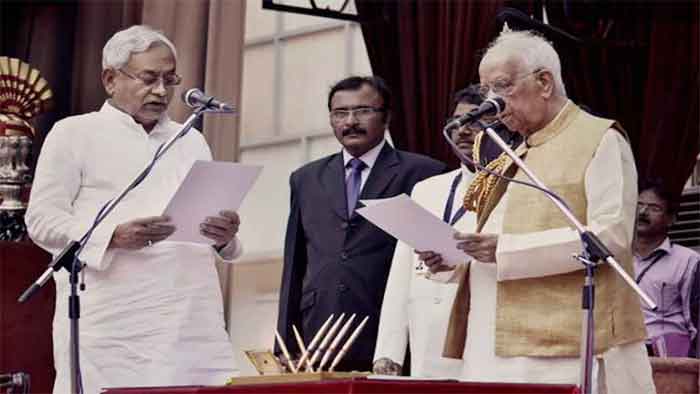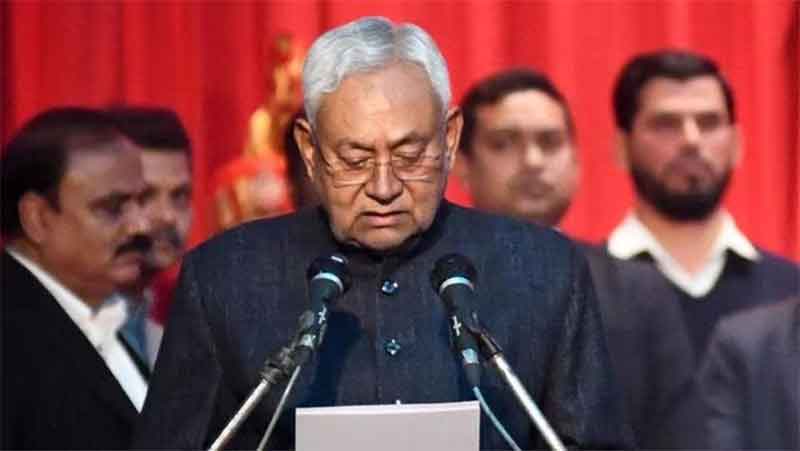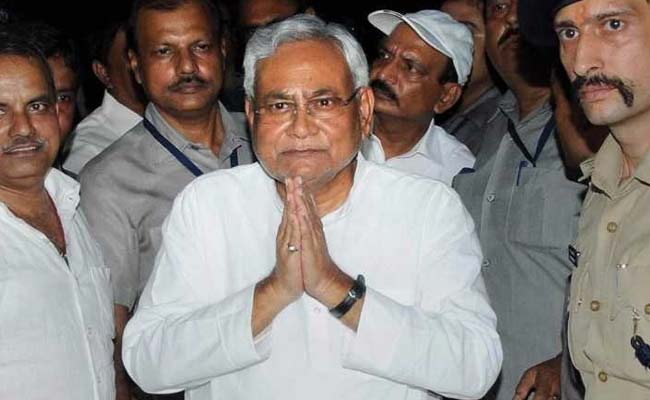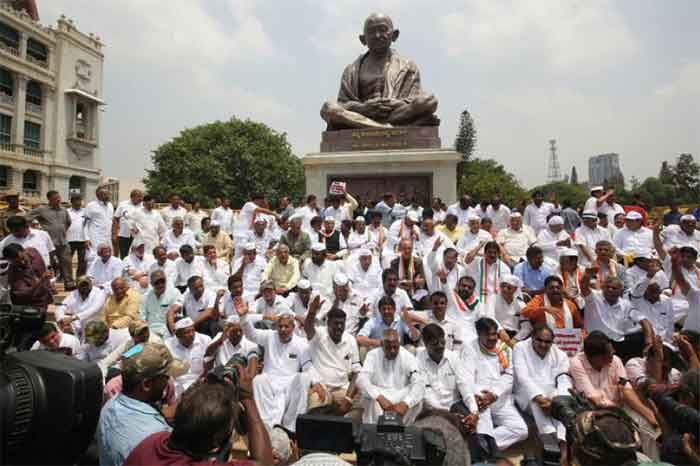
Fearing loss of chief ministerial berth and being pushed into political sidelines has apparently prompted Nitish Kumar to break his party (Janata Dal-United)’s alliance with Bharatiya Janata Party (BJP) and once again shake hands with Rashtriya Janata Dal (RJD). His key concern has for the moment been taken care of, with his remaining Bihar’s chief minister. To a degree, his concern may be viewed as genuine. BJP’s prior motive behind it aligning with regional parties is to use the same to strengthen its own base in their states and then push them out of power. It may be recalled in Jammu & Kashmir (J&K), BJP’s alliance with People’s Democratic Party (PDP) was short-lived. Following J&K assembly elections in December 2014, PDP and BJP reached an alliance in March 2015 to head the state government. The BJP walked out of this alliance on June 19, 2018. Not much needs to be said about the impact this “alliance” has had on Mufti’s political standing in her own home state. Fear of being politically side lined in Maharashtra probably compelled Shiv Sena leader Udhav Thackeray to turn his back towards BJP, walk out of NDA (National Democratic Alliance) and align with UPA (United Progressive Alliance). He stayed the chief minister from November 28, 2019 to June 29, 2022. BJP, as political developments indicate, used other tactics, to push him out of power and have its “man” head the state government.
Nitish Kumar probably feared similar developments in his own state. For the moment, he has succeeded in not tasting such political trouble. It may be recalled, during the last assembly polls (2020), BJP did not succeed in securing a major win. RJD gained more seats and votes in 243-member Bihar assembly. Apprehensions about saffron brigade having gained more ground to propagate its Hindutva agenda were defeated. Covid-phase had probably made people more conscious about their political rights and economic grievances.
Though then as a member of NDA, Nitish Kumar took over as chief minister for another term, he was not oblivious of dismal performance of his party. If coronavirus had not spelled socio-economic tensions for people at practically all levels, RJD may not have been able to politically cash on its impact by laying stress on its economic agenda. While BJP won 74 seats and 19.4% votes, RJD secured 75 seats and 23.1% votes. JD-U won 43 seats and 15.4% votes. Not surprisingly, in this scenario, BJP emerged as a big brother to JD-U in NDA alliance. Kumar no longer enjoyed the earlier dominance his party had in Bihar assembly as well as state politics. Compared to 115 seats JD-U won in 2010 elections, 71 in 2015, in 2020, the party won lesser seats. In 2010, BJP won 91 seats, followed by 53 in 2015. In 2020, while BJP’s performance improved against its gains in 2015, the same cannot be said about JD-U.
JD-U’s performance in 2010 and in 2015 was not based on its friendly relations with BJP. Rather, the case was totally different in the preceding polls. Defeated by BJP in 2014 Lok Sabha polls, key regional parties of Bihar did not wish this scenario to be repeated in assembly polls held in October-November 2015. Political luck favoured Grand Alliance with BJP winning only 53 of the 157 seats, the party contested, securing 24.4% votes. BJP’s allies, Lok Janshakti Party (LJP), Hindustani Awam Morcha and RLSP won only five out of the 86 seats they contested. The Grand Alliance won 178 seats, with RJD securing 80 of 101 seats it contested from, JD-U 71 of 101 seats and Congress 27 of 41 seats they contested. RJD secured 18.4% votes, JD-U – 16.8% and Congress got 6.7% votes. BJP may have performed well in 2015 if the Grand Alliance had not been formed. It may be noted that during the preceding 2010 Bihar assembly elections, JD-U, RJD and Congress had contested as rivals. Their total vote share, 22.50, 18.85 and 8.9% respectively, was more than 50% while the vote share of BJP and its allies was around 40%.
JD-U decided to part company with Grand Alliance on July 26, 2017 and align with BJP. Political handshake between JD-U and BJP brought the latter from opposition to power and pushed Congress and RJD to opposition. JD-U chief Kumar stayed the chief minister. This phase of friendly ties with BJP did not enhance political gains for Kumar in his own home state. Consciousness of this hard reality led Kumar to reconsider continuance of remaining aligned with BJP and a member of NDA. Political sting, as ongoing speculations suggest, caused by his being totally ignored for vice-presidential berth, simply couldn’t be tolerated by him any further. This only confirmed notions probably being entertained by him for quite some time about BJP-stalwarts attitude towards him and their underlying agenda towards strengthening their party in Bihar at the cost of JD-U’s own base and his political credentials. Clearly, he did not want to meet fate of Mufti or Udhav Thackeray.
Equally significant is Kumar’s acceptance that he cannot afford to turn a blind eye towards RJD’s political strength. While Lalu Prasad remains a political bigwig in Bihar, his son Tejashwi Yadav has been politically astute as RJD leader since 2010. His strategies have helped RJD gain more seats than JD-U in 2010, 2015 as well as 2020 assembly elections. Kumar’s attempt to secure strategist Prashant Kishore’s help in 2015 had limited impact. While RJD won 80 seats, 58 more seats than it did in 2010, JD-U won 71, 44 lesser. Tejashwi’s campaigns have focused more on what Bihar and its citizens really need, economic opportunities, jobs and better education.
This does not imply that Bihar’s voters have written off socio-political value of religion and caste. But electorally, they have given more importance to economic claims laid by politicians. In 2020, attempt to use Ayodhya-card did not spell any major gain for BJP. Though Prime Minister touched on Ayodhya-card during his campaign, it did not succeed in turning the electoral tide totally in favour of BJP. LJP leader Chirag Paswan even claimed that he wanted Sita temple in Sitamarhi bigger than Ram temple in Ayodhya. This didn’t help him.
Poor performance of his own party in 2020, despite alliance with BJP, probably made Kumar deliberate on his own political future by remaining in this camp. By turning his back towards it and aligning with RJD as well as other parties, Kumar has certainly ensured that for now he remains the state chief minister. Speculations are being voiced about on whether this should be viewed as a step towards larger ambitions being nurtured by him at the national level. Even if they are, it’s not going to be just a game of numbers confined to Bihar. BJP returned to power in 2019 by winning less than 40% votes. It can by winning even lesser votes if its rivals fail to unite politically and/or if BJP succeeds in dividing its rival parties’ votes. Besides, convincing anti-BJP rivals about his political commitment to remain aligned with them is likely to be quite a tough task for Kumar!
Nilofar Suhrawardy is a senior journalist and writer with specialization in communication studies and nuclear diplomacy. She has come out with several books. These include:– Modi’s Victory, A Lesson for the Congress…? (2019); Arab Spring, Not Just a Mirage! (2019), Image and Substance, Modi’s First Year in Office (2015) and Ayodhya Without the Communal Stamp, In the Name of Indian Secularism (2006).















































